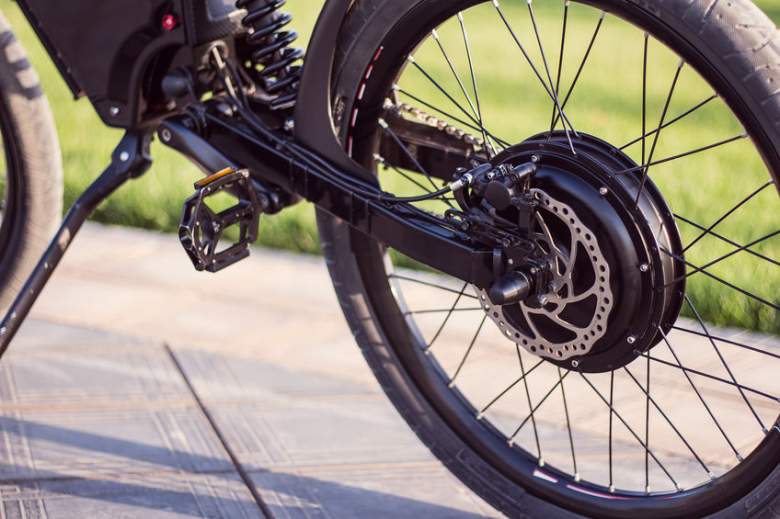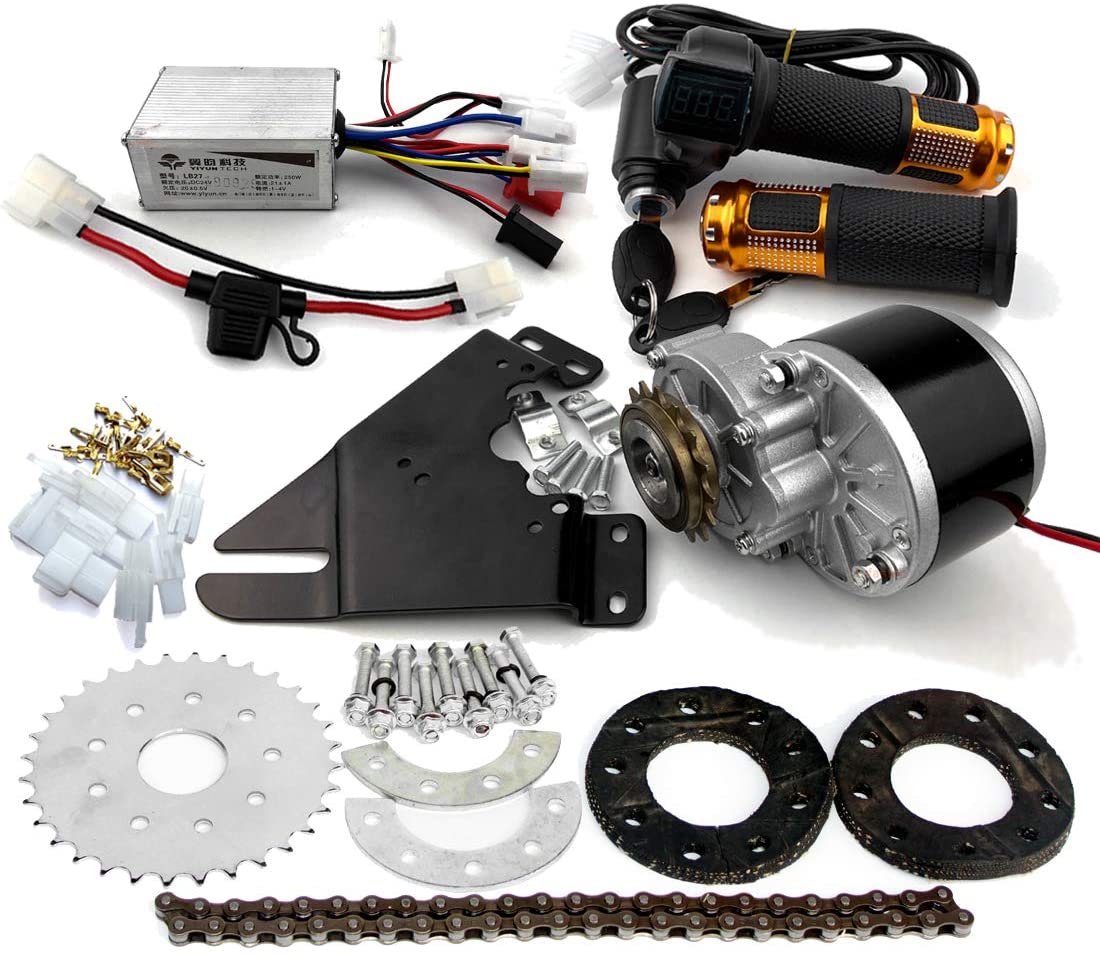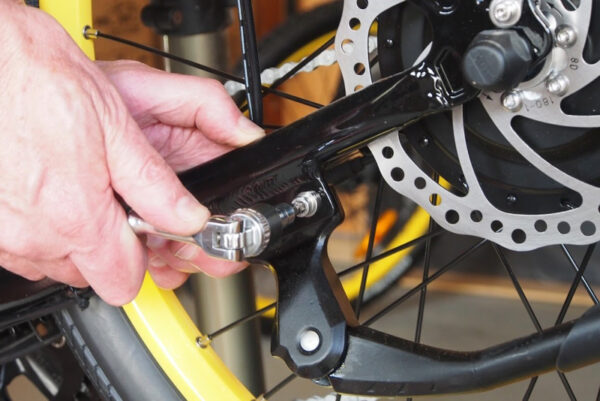Why Convert Your Bike to Electric?
Converting a traditional bike to an electric bike can be a game-changer for commuters, recreational riders, and those with mobility issues. With the rising popularity of electric bikes, many cyclists are turning to electric conversions to enhance their riding experience. By electrifying your bike, you can enjoy increased mobility, reduced environmental impact, and cost savings. Electric bikes offer a convenient and efficient way to travel, making them an attractive option for those looking to reduce their carbon footprint.
One of the primary benefits of electric bikes is their ability to assist riders with mobility issues. Electric bikes can provide a much-needed boost for those who struggle with hills, long distances, or physical limitations. Additionally, electric bikes can be a cost-effective alternative to cars, buses, or trains, making them an excellent option for daily commutes. With the ability to travel longer distances without fatigue, electric bikes can also open up new recreational opportunities for riders.
Furthermore, electric bikes offer a sustainable and environmentally friendly mode of transportation. By reducing reliance on fossil fuels, electric bikes can significantly decrease greenhouse gas emissions and contribute to a cleaner environment. As concern for the environment continues to grow, electric bikes are becoming an increasingly popular choice for eco-conscious cyclists.
For those considering converting their bike to electric, there are several options available. From front wheel to rear wheel and mid-drive conversions, the possibilities are endless. With the right conversion kit and a little know-how, cyclists can transform their traditional bike into a powerful and efficient electric bike. Whether you’re looking to enhance your daily commute or simply enjoy a more leisurely ride, converting your bike to electric can be a rewarding and enjoyable experience.
As the demand for electric bikes continues to grow, it’s essential to consider the benefits of converting your traditional bike to electric. With increased mobility, reduced environmental impact, and cost savings, electric bikes offer a convenient and efficient way to travel. Whether you’re a seasoned cyclist or just starting out, electrifying your bike can be a great way to enhance your riding experience and contribute to a more sustainable future.
Understanding the Basics of Electric Bike Conversion
Electric bike conversion involves transforming a traditional bike into a powerful and efficient electric vehicle. There are several types of conversions available, each with its own unique characteristics and benefits. Front wheel conversions, for example, involve installing an electric motor on the front wheel of the bike, while rear wheel conversions involve installing the motor on the rear wheel. Mid-drive conversions, on the other hand, involve installing the motor near the pedals, providing a more efficient and balanced power delivery.
The key components involved in electric bike conversion include motors, batteries, and controllers. Motors provide the power and propulsion for the bike, while batteries store the energy needed to power the motor. Controllers regulate the flow of energy between the battery and motor, ensuring safe and efficient operation. Other important components include the throttle, which controls the amount of power delivered to the motor, and the display, which provides information on battery level, speed, and other vital metrics.
When considering an electric bike conversion, it’s essential to understand the different types of motors available. Hub motors, for example, are installed directly on the wheel, providing a simple and efficient power delivery. Mid-drive motors, on the other hand, are installed near the pedals, providing a more balanced and efficient power delivery. Crank motors, which are installed on the crankset, provide a more compact and lightweight solution.
Batteries are another critical component of electric bike conversion. Lithium-ion batteries are the most common type used, offering high energy density, long lifespan, and low maintenance. Other types of batteries, such as lead-acid and nickel-metal hydride, are also available, but offer lower performance and shorter lifespan.
Controllers play a crucial role in regulating the flow of energy between the battery and motor. They ensure safe and efficient operation, preventing overheating, overcharging, and other potential issues. Modern controllers often feature advanced technologies, such as regenerative braking and torque sensing, which enhance the overall riding experience.
Understanding the basics of electric bike conversion is essential for anyone looking to turn their bike into an electric bike. By grasping the fundamental concepts and components involved, riders can make informed decisions and ensure a successful conversion. Whether you’re looking to enhance your daily commute or simply enjoy a more leisurely ride, electric bike conversion can be a rewarding and enjoyable experience.
Choosing the Right Conversion Kit for Your Bike
When it comes to converting your bike to electric, selecting the right conversion kit is crucial for a successful and safe transformation. With so many options available, it can be overwhelming to choose the right kit for your bike. However, by considering a few key factors, you can ensure that you find a kit that meets your needs and provides a seamless conversion experience.
One of the most important factors to consider when choosing a conversion kit is the type of bike you have. Different bikes require different types of kits, so it’s essential to choose a kit that is specifically designed for your bike type. For example, if you have a mountain bike, you’ll need a kit that is designed for off-road use and can handle the demands of rugged terrain.
Another critical factor to consider is the wheel size of your bike. Conversion kits are designed to fit specific wheel sizes, so it’s essential to choose a kit that matches your bike’s wheel size. This will ensure that the kit fits properly and functions as intended.
The level of assistance you need is also an important consideration when choosing a conversion kit. If you’re looking for a kit that will provide a high level of assistance, you’ll want to choose a kit with a powerful motor and a large battery. On the other hand, if you’re looking for a kit that will provide a more subtle level of assistance, you may want to choose a kit with a smaller motor and battery.
Popular conversion kit brands, such as Bafang and Grin Technologies, offer a range of kits that cater to different bike types, wheel sizes, and levels of assistance. These kits are designed to provide a seamless conversion experience and are backed by comprehensive warranties and support.
When choosing a conversion kit, it’s also essential to consider the quality of the components and the level of support provided by the manufacturer. Look for kits that use high-quality components, such as motors, batteries, and controllers, and choose a manufacturer that offers comprehensive support and warranty.
By considering these factors and choosing the right conversion kit for your bike, you can ensure a successful and safe transformation. Remember to always follow the manufacturer’s instructions and take necessary safety precautions when installing the kit. With the right kit and a little bit of know-how, you can turn your bike into an electric bike and enjoy the many benefits that come with it.
How to Convert Your Bike to Electric: A Step-by-Step Process
Converting your bike to electric can be a fun and rewarding project, but it requires careful planning and attention to detail. To help you get started, we’ve put together a step-by-step guide on how to convert your bike to electric.
Step 1: Prepare Your Bike
Before you begin the conversion process, make sure your bike is in good working condition. Check the brakes, tires, and chain to ensure they are functioning properly. Also, consider upgrading your bike’s components, such as the brakes and tires, to ensure compatibility and safety with the electric conversion.
Step 2: Choose Your Conversion Kit
Select a conversion kit that is suitable for your bike type and wheel size. Consider factors such as the level of assistance you need, the type of motor, and the battery size. Popular conversion kit brands, such as Bafang and Grin Technologies, offer a range of kits that cater to different bike types and wheel sizes.
Step 3: Install the Motor and Battery
Follow the manufacturer’s instructions to install the motor and battery. Make sure to connect the motor to the battery and the controller, and ensure that all connections are secure and properly insulated.
Step 4: Install the Controller and Throttle
Install the controller and throttle according to the manufacturer’s instructions. The controller regulates the flow of energy between the battery and motor, while the throttle controls the amount of power delivered to the motor.
Step 5: Test Your Electric Bike
Once you’ve completed the installation, test your electric bike to ensure it’s working properly. Check the brakes, acceleration, and top speed to ensure they are functioning as expected.
Troubleshooting Tips
If you encounter any issues during the conversion process, don’t panic. Here are some troubleshooting tips to help you resolve common problems:
Check the connections: Ensure that all connections are secure and properly insulated.
Check the battery: Ensure that the battery is fully charged and properly connected to the controller.
Check the motor: Ensure that the motor is properly connected to the controller and battery.
By following these steps and troubleshooting tips, you can successfully convert your bike to electric and enjoy the many benefits that come with it. Remember to always follow safety guidelines and best practices when working with electrical systems.
Essential Safety Considerations for Electric Bike Conversion
When converting your bike to electric, safety should be your top priority. Electric bikes can be a fun and convenient way to get around, but they also come with unique safety considerations. In this section, we’ll discuss the essential safety considerations you need to keep in mind when converting and riding an electric bike.
Proper Braking
One of the most critical safety considerations for electric bikes is proper braking. Electric bikes can accelerate quickly, and it’s essential to have a reliable braking system to ensure safe stopping. When converting your bike to electric, make sure to upgrade your brakes to a high-quality system that can handle the increased speed and weight of the electric bike.
Tire Pressure
Tire pressure is another critical safety consideration for electric bikes. Underinflated tires can lead to reduced traction, increased risk of punctures, and decreased braking performance. Make sure to check your tire pressure regularly and maintain the recommended pressure for your electric bike.
Electrical System Maintenance
The electrical system of your electric bike requires regular maintenance to ensure safe and efficient operation. Check your battery, motor, and controller regularly for signs of wear or damage, and perform routine maintenance tasks such as cleaning and lubricating the electrical connections.
Riding Safety
When riding an electric bike, it’s essential to follow safe riding practices. Always wear a helmet and protective gear, and follow traffic laws and regulations. Be aware of your surroundings and anticipate potential hazards, such as potholes, gravel, or other obstacles.
Additional Safety Tips
Here are some additional safety tips to keep in mind when converting and riding an electric bike:
Always follow the manufacturer’s instructions for installation and maintenance.
Use a high-quality conversion kit that is designed for your bike type and wheel size.
Test your electric bike thoroughly before riding it on public roads.
Be aware of local laws and regulations regarding electric bikes.
By following these essential safety considerations, you can ensure a safe and enjoyable riding experience with your electric bike. Remember to always prioritize safety and take necessary precautions to avoid accidents and injuries.
Upgrading Your Bike’s Components for Electric Conversion
When converting your bike to electric, it’s essential to upgrade your bike’s components to ensure compatibility and safety with the electric conversion. In this section, we’ll discuss the importance of upgrading your bike’s components and provide recommendations for suitable upgrades.
Brakes
Upgrading your brakes is crucial when converting your bike to electric. Electric bikes can accelerate quickly, and it’s essential to have a reliable braking system to ensure safe stopping. Consider upgrading to high-quality disc brakes or hydraulic brakes, which provide better stopping power and control.
Tires
Upgrading your tires is also essential when converting your bike to electric. Electric bikes can put additional stress on the tires, and it’s essential to have tires that can handle the increased weight and speed. Consider upgrading to high-quality tires with a good tread pattern and sufficient puncture resistance.
Suspension
Upgrading your suspension is also important when converting your bike to electric. Electric bikes can be heavier than traditional bikes, and it’s essential to have a suspension system that can handle the additional weight. Consider upgrading to a high-quality suspension fork or rear shock, which can provide better control and comfort.
Other Components
In addition to brakes, tires, and suspension, there are other components that you may need to upgrade when converting your bike to electric. These include the chain, cassette, and derailleurs, which may need to be upgraded to handle the increased power and speed of the electric bike.
Recommendations for Suitable Upgrades
Here are some recommendations for suitable upgrades for your bike’s components:
Brakes: Shimano XT or SRAM Guide disc brakes
Tires: Continental or Schwalbe tires with a good tread pattern and puncture resistance
Suspension: RockShox or Fox suspension forks or rear shocks
Chain, cassette, and derailleurs: Shimano or SRAM components designed for electric bikes
By upgrading your bike’s components, you can ensure a safe and enjoyable riding experience with your electric bike. Remember to always follow the manufacturer’s instructions and recommendations for upgrading your bike’s components.
Real-World Examples of Successful Electric Bike Conversions
In this section, we’ll showcase real-world examples of successful electric bike conversions, including before-and-after photos, testimonials, and performance metrics. These examples will highlight the benefits and results achieved by riders who have converted their bikes to electric.
Example 1: Commuter Bike Conversion
A busy professional in San Francisco converted his commuter bike to electric using a Bafang mid-drive conversion kit. The conversion increased his bike’s range and speed, allowing him to commute to work faster and more efficiently. He reported a significant reduction in traffic stress and an increase in overall satisfaction with his daily commute.
Example 2: Mountain Bike Conversion
A mountain biker in Colorado converted his bike to electric using a Grin Technologies rear-wheel conversion kit. The conversion allowed him to tackle more challenging trails and ride for longer periods without fatigue. He reported a significant increase in his overall riding experience and a newfound sense of freedom on the trails.
Example 3: Recreational Bike Conversion
A recreational rider in New York converted her bike to electric using a front-wheel conversion kit. The conversion allowed her to ride longer distances and explore new areas of the city without fatigue. She reported a significant increase in her overall enjoyment of riding and a newfound sense of confidence on the road.
Performance Metrics
Here are some performance metrics from the examples above:
Commuter Bike Conversion:
Range: 40 miles
Top Speed: 28 mph
Mountain Bike Conversion:
Range: 30 miles
Top Speed: 25 mph
Recreational Bike Conversion:
Range: 50 miles
Top Speed: 22 mph
Testimonials
Here are some testimonials from riders who have converted their bikes to electric:
“I was skeptical about converting my bike to electric, but it’s been a game-changer for my daily commute. I can ride faster and more efficiently, and I’ve reduced my traffic stress significantly.” – John, San Francisco
“I was blown away by the performance of my electric mountain bike. I can tackle more challenging trails and ride for longer periods without fatigue. It’s been a total game-changer for my riding experience.” – Sarah, Colorado
“I was hesitant to convert my bike to electric, but it’s been a great decision. I can ride longer distances and explore new areas of the city without fatigue. It’s been a total game-changer for my recreational riding experience.” – Emily, New York
Maintenance and Troubleshooting Tips for Your Electric Bike
Regular maintenance is essential to ensure the optimal performance and longevity of your electric bike. In this section, we’ll provide practical advice on maintaining and troubleshooting your electric bike, including routine checks, common issues, and repair techniques.
Routine Checks
Here are some routine checks to perform on your electric bike:
Check the tire pressure regularly to ensure proper inflation.
Check the brakes regularly to ensure proper function and adjust as needed.
Check the chain and gears regularly to ensure proper alignment and lubrication.
Check the battery and electrical system regularly to ensure proper function and charge.
Common Issues
Here are some common issues that may arise with your electric bike:
Flat tires: Check the tire pressure and inflate as needed. If the tire is damaged, replace it with a new one.
Brake problems: Check the brake pads and adjust or replace them as needed.
Chain and gear problems: Check the chain and gears for proper alignment and lubrication. Adjust or replace them as needed.
Battery and electrical system problems: Check the battery and electrical system for proper function and charge. If the problem persists, consult a professional mechanic.
Repair Techniques
Here are some repair techniques to keep in mind:
Use a torque wrench to tighten bolts and screws to the recommended specification.
Use a multimeter to test the electrical system and diagnose problems.
Use a tire lever to remove and install tires.
Use a chain tool to adjust and repair the chain.
Importance of Regular Maintenance
Regular maintenance is essential to ensure the optimal performance and longevity of your electric bike. By performing routine checks and addressing common issues, you can prevent problems from arising and ensure a safe and enjoyable riding experience.
Conclusion
In conclusion, maintaining and troubleshooting your electric bike is essential to ensure optimal performance and longevity. By following the tips and techniques outlined in this article, you can keep your electric bike in top condition and enjoy a safe and enjoyable riding experience.






